A Self-Guided Walking Tour Of The Cultural And Historic City Of Cuenca, Ecuador
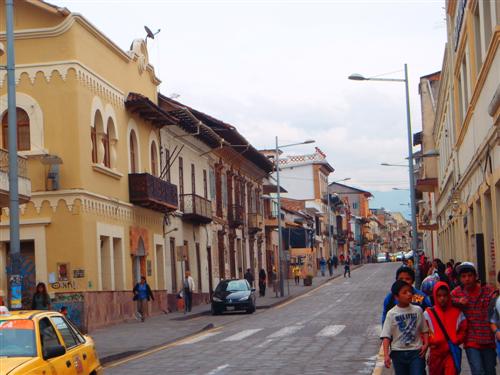 When traveling Ecuador, Cuenca — the capital of the Azuay Province in the southern part of the country — features a rich architectural and cultural heritage.
In fact, on December 1, 1999, the colonial city was given the nomination of Cultural Heritage of Humanity.
Moreover, it’s a UNESCO World Heritage Site due to its unchanged urban plan and plentiful historical resources.
There is a lot to explore in Cuenca, and to help you experience the art, culture, and history of the city on a budget, here is a self-guided walking tour.
If you’re coming from another country and need to convert money to U.S. dollars, the currency used in Ecuador, start at Vazcorp, on the corner of Gran Colombia and Luis Cordero. From my experience, this is the only place in Cuenca to do this.
When traveling Ecuador, Cuenca — the capital of the Azuay Province in the southern part of the country — features a rich architectural and cultural heritage.
In fact, on December 1, 1999, the colonial city was given the nomination of Cultural Heritage of Humanity.
Moreover, it’s a UNESCO World Heritage Site due to its unchanged urban plan and plentiful historical resources.
There is a lot to explore in Cuenca, and to help you experience the art, culture, and history of the city on a budget, here is a self-guided walking tour.
If you’re coming from another country and need to convert money to U.S. dollars, the currency used in Ecuador, start at Vazcorp, on the corner of Gran Colombia and Luis Cordero. From my experience, this is the only place in Cuenca to do this.
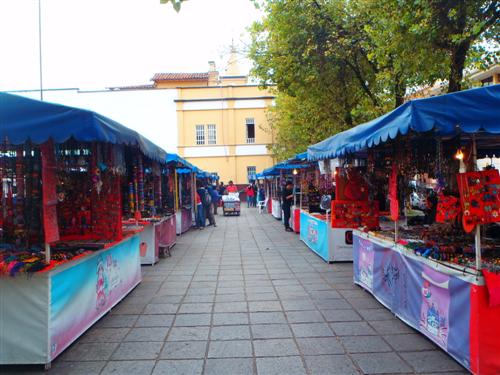 Make a right and go one block to Mariscal Lamar, then one block left to Benigno Malo. On the corner of the two streets you’ll find an open air handicraft market with lots of unique, handmade jewelry.
Make a right and go one block to Mariscal Lamar, then one block left to Benigno Malo. On the corner of the two streets you’ll find an open air handicraft market with lots of unique, handmade jewelry.
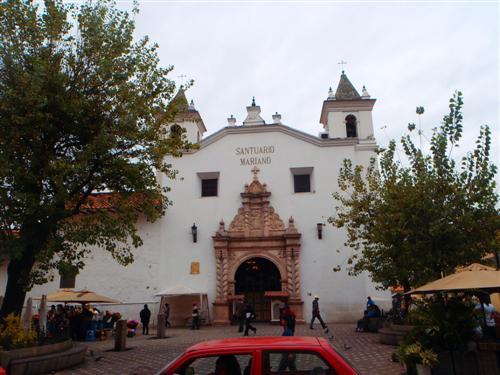 Keep going straight for one block and make a left onto Padre Aguirre. Walk three blocks and you’ll come to the church of Carmen de la Asuncion with its outdoor flower market. While the church may not seem spectacular from the outside, the inside is immaculate. Even from the back of the room, the alter seemed to glow magically.
Keep going straight for one block and make a left onto Padre Aguirre. Walk three blocks and you’ll come to the church of Carmen de la Asuncion with its outdoor flower market. While the church may not seem spectacular from the outside, the inside is immaculate. Even from the back of the room, the alter seemed to glow magically.
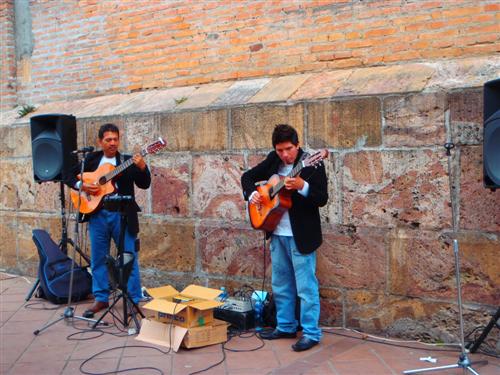 Now you’ll continue heading east on my favorite street in Cuenca, Marsical Sucre. Walking down this street, you’ll find churches, museums, parks, graffiti art, and live street performances.
Now you’ll continue heading east on my favorite street in Cuenca, Marsical Sucre. Walking down this street, you’ll find churches, museums, parks, graffiti art, and live street performances.
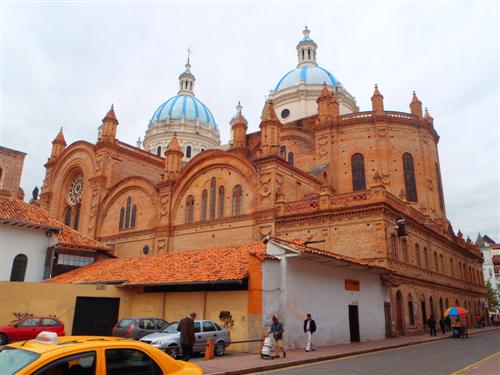 On the corner of Benigno Malo you’ll find the Cathedral Nueva, and one block down will be the breathtaking Cathedral Vieja, a religious museum.
On the corner of Benigno Malo you’ll find the Cathedral Nueva, and one block down will be the breathtaking Cathedral Vieja, a religious museum.
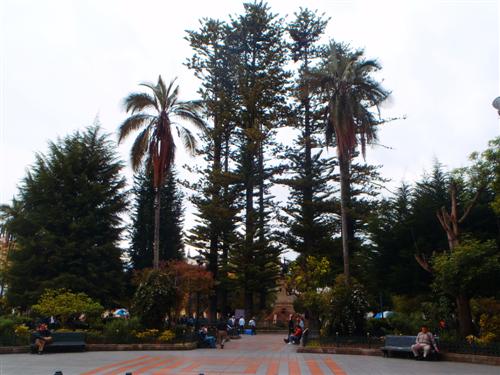 This is also where you’ll find Abdon Calderon Park is, a small but beautiful plaza with unique flora and a relaxing vibe.
This is also where you’ll find Abdon Calderon Park is, a small but beautiful plaza with unique flora and a relaxing vibe.
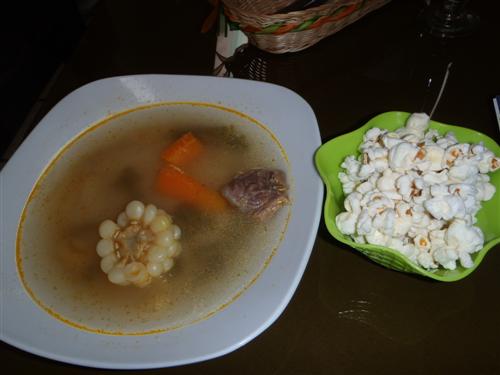 If you’re hungry, one block after the park is a small local restaurant with a quiet atmosphere on the left called “Tia Pepita” cafeteria. It’s very clean, and the bathroom even has toilet paper, soap, and paper towels. Opt for their menu of the day- just say “menu del dia, por favor”- and for $2 you’ll get soup, an entree, dessert, and juice. When I went, I had a vegetable and beef soup, popcorn, rice and noodles with beef, candied peaches, and pineapple juice.
If you’re interested in seeing another church, make a left onto Antonio Borrero, walk one block, and make a right onto Simon Bolivar. Here you’ll find the San Alfonso Church, as well as the Esqueleotologia Museum.
If you’re hungry, one block after the park is a small local restaurant with a quiet atmosphere on the left called “Tia Pepita” cafeteria. It’s very clean, and the bathroom even has toilet paper, soap, and paper towels. Opt for their menu of the day- just say “menu del dia, por favor”- and for $2 you’ll get soup, an entree, dessert, and juice. When I went, I had a vegetable and beef soup, popcorn, rice and noodles with beef, candied peaches, and pineapple juice.
If you’re interested in seeing another church, make a left onto Antonio Borrero, walk one block, and make a right onto Simon Bolivar. Here you’ll find the San Alfonso Church, as well as the Esqueleotologia Museum.
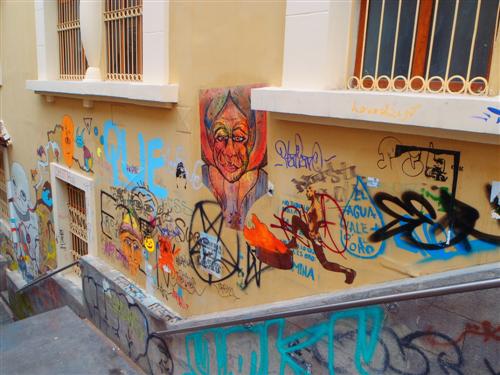 Now go back down Antonio Borrero heading south until you come to Calle Larga. On the way, you’ll pass the churches of Las Conceptas and La Merced. Once at Cella Larga, make a right but cross the street. Make sure to peek down the various stairways that lead down to a lower part of the city, as many of these contain brilliant graffiti.
Now you’ll start walking to the enormous community market that will be on your right. Calle Larga is full of museums, and along the way you’ll pass the Panama Hat Museum, Amaru Zoo, and a museum honoring Reigio Crespo Toral, an Ecuadorian writer born in Cuenca.
Now go back down Antonio Borrero heading south until you come to Calle Larga. On the way, you’ll pass the churches of Las Conceptas and La Merced. Once at Cella Larga, make a right but cross the street. Make sure to peek down the various stairways that lead down to a lower part of the city, as many of these contain brilliant graffiti.
Now you’ll start walking to the enormous community market that will be on your right. Calle Larga is full of museums, and along the way you’ll pass the Panama Hat Museum, Amaru Zoo, and a museum honoring Reigio Crespo Toral, an Ecuadorian writer born in Cuenca.
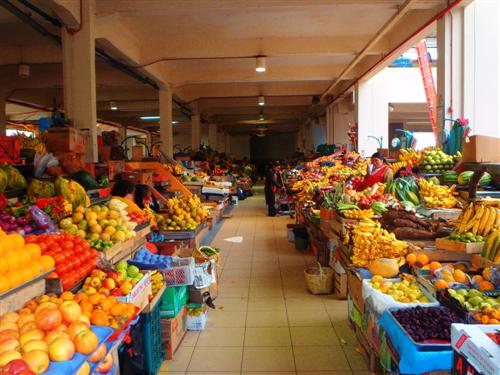 Once you get to the market, you’ll be in awe. It’s in an enormous building, and sells everything: typical local dishes, fruit, vegetables, meats, shakes, cheeses, nuts, clothes, hats, accessories, gifts, and much more. My favorite thing about markets is wandering around the fruit area, and discovering unknown varieties. The market is also a great way to get a glimpse into the local culture.
After the market, you’ll backtrack and walk up Calla Larga the other way. Take your time and notice all the elaborate graffiti, numerous museums and art galleries as you walk. You’ll also get to see the Todos Santos ruins, which are from the Canari, Inca, and Spanish periods of history.
Once you get to the market, you’ll be in awe. It’s in an enormous building, and sells everything: typical local dishes, fruit, vegetables, meats, shakes, cheeses, nuts, clothes, hats, accessories, gifts, and much more. My favorite thing about markets is wandering around the fruit area, and discovering unknown varieties. The market is also a great way to get a glimpse into the local culture.
After the market, you’ll backtrack and walk up Calla Larga the other way. Take your time and notice all the elaborate graffiti, numerous museums and art galleries as you walk. You’ll also get to see the Todos Santos ruins, which are from the Canari, Inca, and Spanish periods of history.
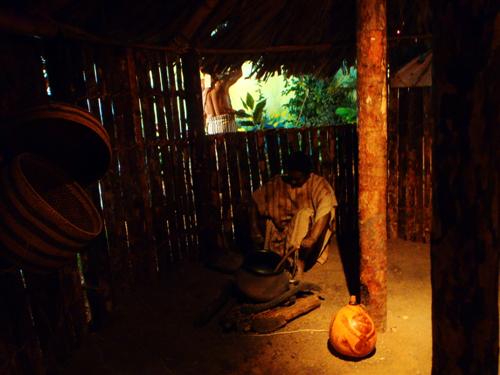 When you come to a fork in the road, continue on the higher path. You can choose to visit numerous museums, such as the Museum of Medical History, Manuel Agustin Landivar Museum, Aboriginal Culture Museum, and many more. I chose to go into the Pumapungo (Banco Central), which had nothing to do with currency, but everything to do with culture. The bottom floor contained art made with various mediums, while the second floor contained culture and historical re-enactments and information. My favorite part was walking through the recreations of different dwellings from history. They also had displays of shrunken heads – still with facial hair and lips sewn shut to ward off evil spirits – that were part of an educational exhibit on indigenous cultures.
For a street map of Cuenca, click here. You can also get a really great map at the bus station in the information center.
When you come to a fork in the road, continue on the higher path. You can choose to visit numerous museums, such as the Museum of Medical History, Manuel Agustin Landivar Museum, Aboriginal Culture Museum, and many more. I chose to go into the Pumapungo (Banco Central), which had nothing to do with currency, but everything to do with culture. The bottom floor contained art made with various mediums, while the second floor contained culture and historical re-enactments and information. My favorite part was walking through the recreations of different dwellings from history. They also had displays of shrunken heads – still with facial hair and lips sewn shut to ward off evil spirits – that were part of an educational exhibit on indigenous cultures.
For a street map of Cuenca, click here. You can also get a really great map at the bus station in the information center. 
Hi, I’m Jessie on a journey!
I'm a conscious solo traveler on a mission to take you beyond the guidebook to inspire you to live your best life through travel. Come join me!
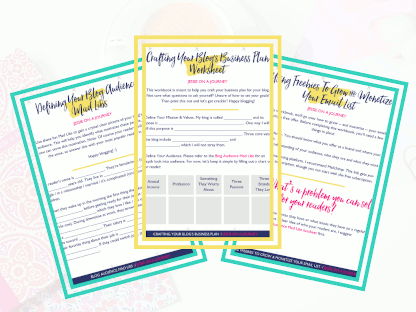
Want to live your best life through travel?
Subscribe for FREE access to my library of fun blogging worksheets and learn how to get paid to travel more!


I’ve never been to Ecuador and these post is pretty interesting. Thanks for sharing this with us.